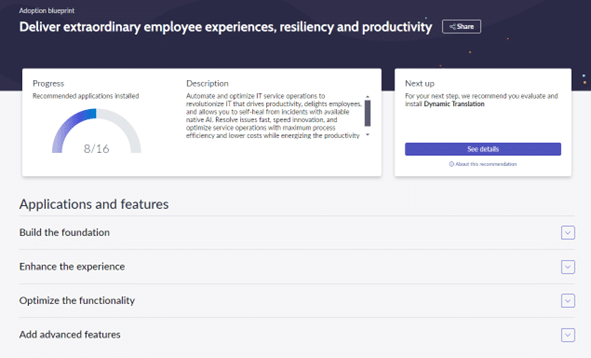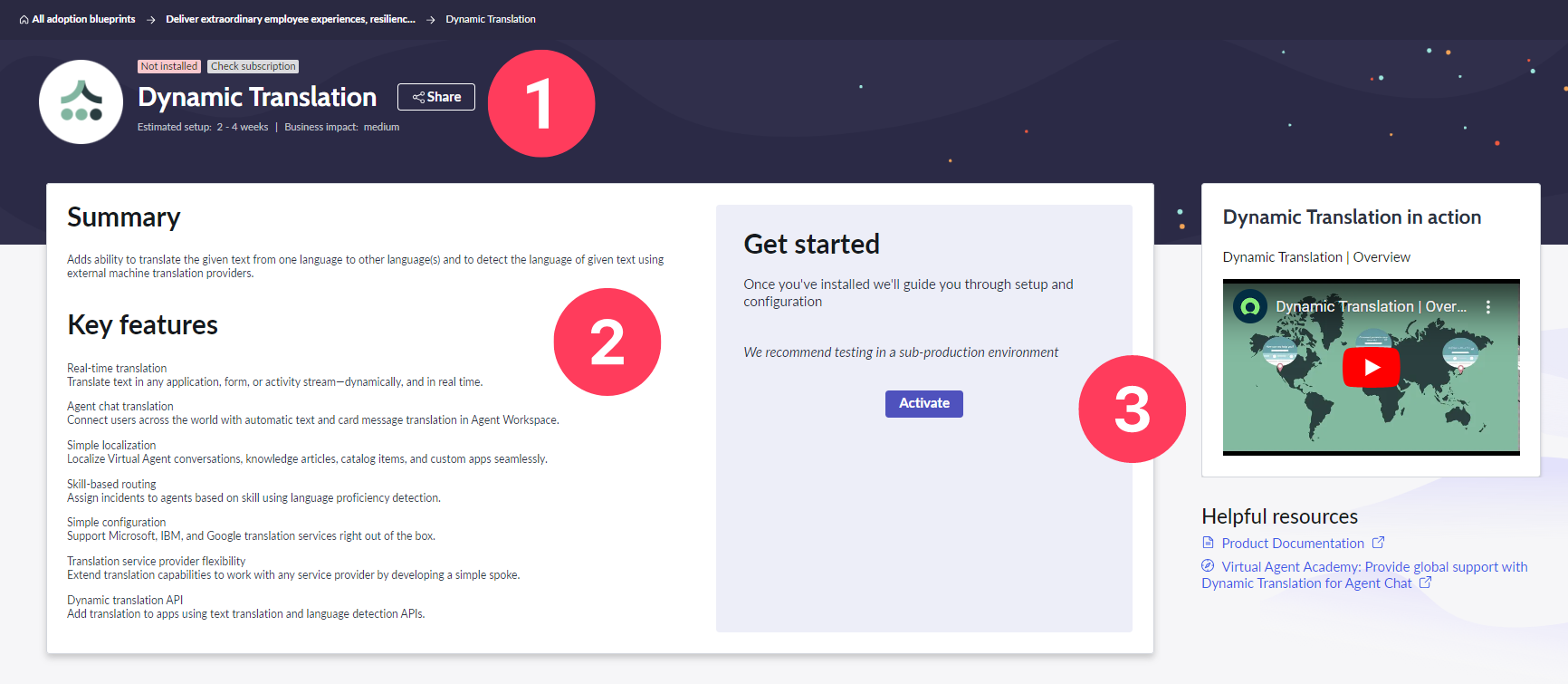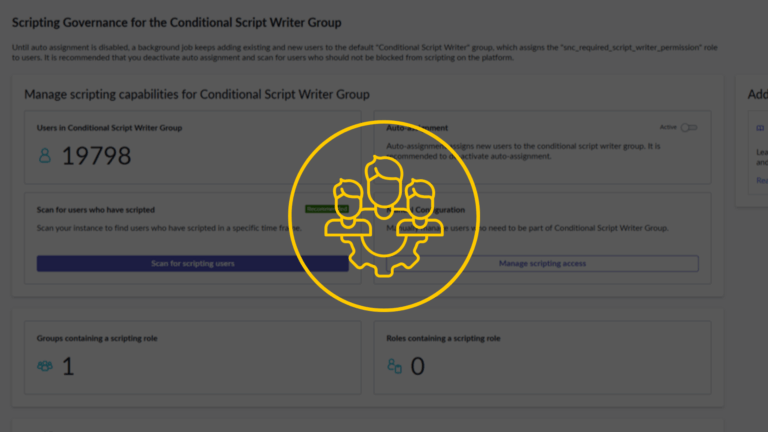In my previous post I explained what the Adoption blueprint is. Today I will dive into how to use it in a more practical approach.
How to Use Adoption Blueprints
In the Washington DC release, there are several adoption blueprints to choose from. For demonstration purposes, let us run through what happens when you choose one. To access adoption blueprints, click the admin tab and click on ‘Adoption Blueprints’.

The cards display how many recommended applications you’ve already installed for the blueprint.
Let us now choose the ‘Deliver extraordinary employee experiences, resiliency and productivity’-blueprint by clicking ‘See details’ beneath it – you can of course choose any of the six adoption blueprints, whichever aligns with your IT-strategy and business goals.

Adoption blueprints now gives you recommendations on what features or applications to implement in four tracks; ‘Build a foundation’, ‘Enhance the experience’, ‘Optimize the functionality’, ‘Add advanced features’. These tracks are simply a description of the level of functionality – ServiceNow wants you to think of these as crawl, walk, run, and fly phases.

We have now chosen the ‘Build the foundation’-track. You now see a list of applications and features recommended to help you make the most progress toward the adoption blueprint. They’re based on what you’ve already installed and your overall use of what is available.
Here ServiceNow has already recommended where to start – look to the ‘Next up’-box on the top right, or to the blue ‘Next up’-arrow directly on the recommended application.
There are five different labels that a recommendation can have: ‘Installed’, ‘Not installed’, ‘Needs update’, ‘Included in subscription’, ‘Check subscription’. If you see Check subscription next to a listed app, go to the subscription management module in production to confirm your entitlement to that app before installing it.
When you click the recommendation, you now get an estimated setup time, business impact, a summary, key features, technical details, a setup guide, a setup, and configuration guide, as well as a video showcasing the feature or application.

Estimated Effort & Business Impact (1)
When adopting new technology or systems, understanding both the initial investment and the long-term benefits is crucial. ServiceNow facilitates this by providing an estimate of the setup time required and the expected business impact of implementing specific functionalities. Here’s how you can use this information.
Assess Resource Allocation
The estimated effort helps businesses plan the deployment phase, allowing for a realistic allocation of resources. Whether it’s human resources or time, knowing the effort required upfront aids in minimizing disruptions to daily operations.
Quantify Business Impact
ServiceNow’s projection of the expected business impact assists in building a solid business case for stakeholders. This includes potential ROI (Return on Investment), efficiency gains, and improvements in service delivery. It’s not just about cost savings; it’s also about enhancing value creation across the organization.
Guideline for Prioritization
Use the estimates as a guideline to prioritize the rollout of different functionalities. Functions with a lower effort but high impact might be prioritized to gain quick wins and demonstrate value early in the implementation process.
Summary & Key Features (2)
The summary and key features sections are crafted to directly support your business case development, providing clear and concise information that underlines the benefits and capabilities of the ServiceNow feature in question.
Tailored Language
The summary is written in business-friendly language that resonates with executives and decision-makers. It succinctly outlines what the feature does and why it matters, making it easier to align technology adoption with business strategy.
Highlight Key Features
Key features are spotlighted to showcase the specific functionalities that differentiate ServiceNow or add the most value to your operations. This might include automation capabilities, integration options, user experience enhancements, or analytics and reporting tools.
Support Strategic Objectives
By emphasizing how these features align with and support your business’s strategic objectives, this section aids in securing buy-in from various stakeholders. It demonstrates not just the “what” and the “how,” but also the “why” behind adopting ServiceNow functionalities.
Helpful Resources (3)
On the right-hand side of the workspace, you get a video explaining the functionality, use-cases, and showing you what it can look like when the feature is ‘in action’.
You also find ‘Helpful Resources’ – here you can find the product documentation, deployment guides, use-cases, process guides, implementation insights, workshops etc. These resources can be very helpful both before, during, and after an installation.
Conclusion
This is how adoption blueprints helps you to prioritize what is the most important now in your ServiceNow-journey. Now it is up to you to take the necessary steps to improve your usage and adoption of your ServiceNow platform. If you want to read more about our insights into how Adoption Blueprints provides you value in aligning your IT strategy to your business goals, read my previous article.







